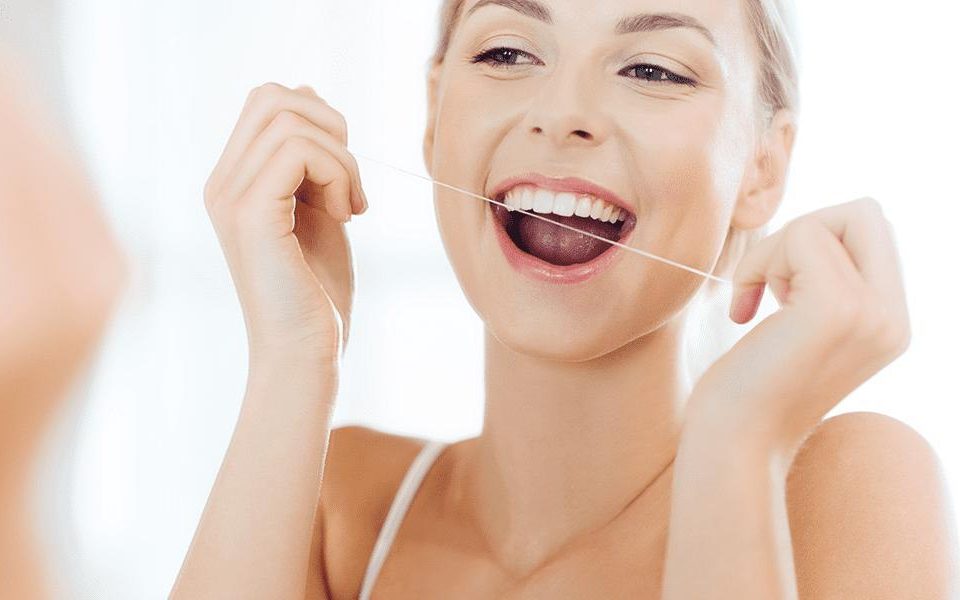
How To Floss With Braces
April 7, 2023
What To Know About Toddler Teeth Grinding
July 10, 2023Practicing daily oral hygiene is critical to maintaining a nice bright smile, sweet-smelling breath and overall physical health. While we’re all familiar with brushing your teeth twice a day, it’s important to stress the importance of flossing as well.
However, studies show that flossing isn’t a favorite hobby. In fact, 36% of adults have claimed they’d rather perform an unpleasant chore — such as cleaning the toilet — over daily flossing with traditional floss.
Luckily, tools such as water flossers can easily replace traditional floss and even reach those stubborn spots that you might normally struggle to reach.
In this blog, we’ll go over the definition of a water flosser, the benefits of using a water flosser and how to properly use a water flosser.
[Related: Your Guide to Flossing]
What Is a Water Flosser?
A water flosser is a handheld oral hygiene tool. It uses a steady pulse of water to clean between your teeth and gums and remove food debris, plaque and other bacteria.
These oral irrigation devices are helpful, simple-to-use tools that can enhance your routine and make daily flossing easier. Water flossers are also great at cleaning braces, bridges, dental implants and crowns.
What Are The Benefits of Water Flossers?
Flossing is critical to maintaining oral health. If you don’t floss, you’re allowing food debris and stubborn bits of tartar to collect between your teeth and rot. Over time, all that gunk causes gum disease and tooth decay.
Brushing regularly and even using antimicrobial mouthwash won’t be enough to get to those spots. One of the most effective methods of flossing and getting rid of that buildup is using a water flosser.
How Do You Use a Water Flosser?
Many people come to enjoy the process of using a water flosser. Sometimes, they even find that it motivates them to floss more often than they would with traditional floss. Here are some simple steps illustrating how to properly use a water flosser.
Set Up Your Water Source
Depending on the type of water flosser you have, you might have an attached water reservoir or one that connects directly to a faucet. If you have an attached water reservoir, remove the top and fill it with lukewarm water. Most people avoid using cold water so that you don’t shock your teeth — but if you prefer it cold, that’s up to you!
Tip: If you’re learning how to use a water flosser without making a mess, make sure to close the reservoir lid before you turn on the device.
[Related: How To Whiten Your Teeth]
Select Your Tip
Once you’ve added the water source, choose the tip of your water flosser. Most tools come with a few standard tips, including the default jet tip, a toothbrush tip and a pick tip.
Choose the one that works best for you, and lock it into place. If you’re just starting out learning, we recommend going with the default jet tip.
Choose Your Pressure
Your water flosser should have a dial or knob that allows you to adjust its water pressure. For example, if you have sensitive teeth or gums, you don’t have to use the same pressure setting you would if you were trying to dislodge something from under a dental bridge.
For the first few times using your water flosser, pick a low to middle-range pressure and work your way up to high. The flossing should feel like a comfortable water massage rather than a pressure washer!
Position Your Flosser
Now it’s time to position your flosser correctly. Hold the tip a little bit away from your teeth and gums rather than placing it directly against their surface. Lean over the sink and spray every interdental area, both on the inside and the outside of your teeth.
Move Along Your Gumline
Slowly direct the stream of water at your gumline and areas between the teeth, tooth by tooth. Hold the jet of water you direct at each tooth for about two seconds, each on both the inside and the outside of your teeth, until you’ve treated your entire mouth. The whole process should take only two to three minutes.
[Related: The Difference Between a Manual vs. Electric Toothbrush]
Turn Off, Clean and Store
Once you’re done water flossing, turn off the device, remove the nozzle and drain the remaining water. Remember: Always drain the water and rinse the reservoir to minimize the chances of growing bacteria and to keep it hygienic.
For a helpful step-by-step video, check out Waterpik®’s YouTube segment:
How Often To Use a Water Flosser
If you’re wondering when or how often to use a water flosser, the answer differs for everyone. The main takeaway is to use your water flosser at least once daily. You can use your water flosser either before or after you brush — it doesn’t make much difference as long as you floss thoroughly.
How To Properly Use a Water Flosser if You Have Braces
You can certainly use a water flosser tool if you have braces. In fact, most water flossers come with an orthodontic tip designed especially for people with braces. The tip is small enough that it can direct the water flow into all the small spaces between the wire, teeth and gums.
[Related: How To Floss With Braces]
How To Properly Use a Water Flosser if You Have Gum Disease
If you’re experiencing gum disease, you might find it difficult to keep your mouth as clean and healthy as you’d like. Water flossers are great tools because they help remove bacteria and debris from deep periodontal pockets. We suggest using the pick tip rather than the brush or default jet tip to get into those crevices.
Take Care of Your Dental Health With Cascadia Dental Specialists
For more information and advice about flossing or to start your oral hygiene journey, contact Cascadia Dental Specialists today! You can make an appointment for your regular exams and cleaning and learn more about our services.
Featured image via Pexels





